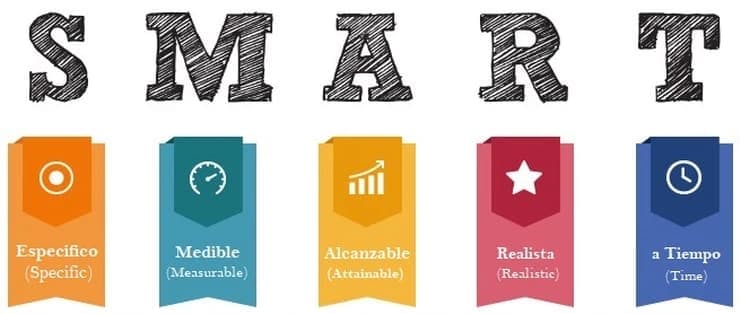Do you have trouble keeping your ideas organized? I can help you
Have you ever had the feeling that time is never enough for you to do everything you wish? Do you have plans but never finish taking them forward because you get lost on the way? Do you have goals to fulfill but you never achieve them? Do you find it difficult to determine the priorities of your multiple objectives? I will give you some tips that will help you put your ideas in order, prioritize them and transform them into a concrete plan to execute and measure their compliance.

Everyone who knows me knows that I am an extremely organized person (which is not the same as a structured one). Putting my ideas in order and putting together a plan to fulfill them was never a hard thing for me to do, because it came out naturally.
At some point I realized that this was not the common case. Many times, relatives, friends or colleagues told me their concerns and I really did not understand why that was a problem, they just had to do this or that. Or I saw that they had a plan, but instead of focusing on that question, they were discussing another plan that was obviously secondary. I will try to explain how I do it. I said try, because as it is part of my personality, it is a bit difficult to analyze and recopy in order to explain it.
First of all, let’s differentiate what is an “expression of desire” and a “goal to achieve”. We can desire many things in life (that’s easy). When we really care about something, we have to make a plan to carry it out. That differentiates a simple desire from an objective to fulfill.
I think the best way to help you is giving you a series of steps you should follow. Anyway, the best thing is that you find your own system and adapt it to your way of being and thinking.
1.- Make a list of objectives
You have to make a list with all the objectives you aim to achieve.
As I mentioned in another article, if you do not know what you want in life you will not be able to achieve success. Also, if you omit important things on that list, you will not achieve the others neither, because your mind will be elsewhere.
I recommend you to start where it hurts most. That is, ask yourself a simple question: “Are you happy?” Which was the answer?
Yes
No
Yes, but…
Do you know what is the best? That the answer does not matter.
If it was “yes” I would say “okay, but don’t you want anything else? Do you have absolutely everything?” I’m sure you’re not, because you would not be reading this if you were. Besides, nobody has everything..
If the answer was “no”, analyze the reason (what is bothering you the most?).
If the answer was “yes, but …”, what are those “buts”?
I recommend categorizing your analysis. We all have different types of goals in life:
Economic
Professional
Spiritual
Personal
Etc.
2.- Filter the list
Some objectives may not be as important as the rest. Do not try to reach them all, because surely it will be too much. Focus on what is paramount to you.
Besides, some objectives may depend on others. Focus on the first step to take, then you can worry about the following ones.
3.- Redefine the objectives
Now that you have a limited list of objectives to achieve, you must rewrite them so that they are S.M.A.R.T. objectives (I will not explain this, ask Google about it, I’ll leave you an image attached as a clue).

Once defined, if the deadline to reach any of the objectives exceeds 12 months (to give a reasonable measure), remove it from the list and replace it with a previous objective that takes you a little closer to that other goal so far away now.
4.- Prioritize the list
At this point, if you have done well, all the objectives are concrete, possible and have a date to reach. Well, which is the most important of all of them? Is there anyone that does not have the same weight as the rest? Which category will give you the most satisfaction?
5.- Make a plan
A plan is nothing more than a series of steps, tasks or objectives of a lower level (let’s call it “goals”) that will bring you closer and closer to the main objective.
The plan must have measurable milestones, to know beyond doubt whether or not you met a particular task. We could say that each defined milestone should also respect the SMART principle.
Be honest with yourself. For example, with respect to work, do you want professional growth, something that challenges you intellectually or do you want a better economic reward? It is very important that you are clear with this, since the plan that you will have to make to achieve one or another objective is not the same.
6.- Check your execution
You could think that in the previous point the work ended, but it is not like that. It is very important that, after a certain pre-stipulated time, you check whether or not you achieved each planned objective.
If possible, you should be able to determine to what extent you reached or not the goal. For example, if you defined an economic objective consisting on increasing your income before the end of the year in order to reach 3000 euros per month and, when the time has come you have managed to earn 2000 euros per month, you have reached the goal by 66%.
Something that could help you is to use a good tool to record your objectives, the plan to fulfill and control your evolution. This could be from an Excel spreadsheet or a more specific product if the objectives are multiple and you want greater tracking power.
I hope you can put these tips into practice and organize your ideas, transform them into concrete goals and make them true.
